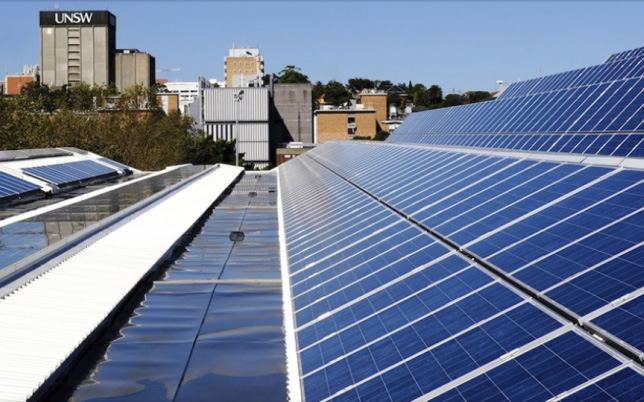Summary
The University of Sydney, in partnership with SunDrive, aims to improve the commercial viabilities of silicon-perovskite (Si-perovskite) tandem solar cell technologies, including the development of high-efficiency Si-perovskite cells and modules, and low-cost fabrication technologies for Si-perovskite modules with high-durability.
Need
This project is funded under the ULCS PV Research and Development Round and will build on ARENA’s previous investment into solar PV that support projects aligning with ARENA’s ‘Solar 30 30 30’ target to improve module efficiency to 30 per cent and reduce total construction costs of utility scale solar farms to 30 cents per watt by 2030. Funding is being made available to focus on commercialisation prospects, which will take place after an initial R&D phase, to assist getting the new technologies into the market.
Si-perovskite tandem solar cell technology represents a promising approach in overcoming the performance limits of silicon solar cell technology. However, many demonstrations to date have been directed at improving the efficiency on small areas, and not on large commercially viable sized cells. Low-cost manufacturability and durability at both cell and module levels is critical for Si-perovskite tandem technology to enter the competitive marketplace.
The project will build on the track record of University of Sydney in contributing to large area (greater than 10cm²) Si-perovskite monolithic tandem cell demonstrations, and SunDrive’s success in transforming its proprietary low-cost Si cell copper metallisation technology from lab demonstration to commercial-size module fabrication including its track record of reporting a commercial size Si cell with record efficiency.
Action
The project aims to develop a Si-perovskite tandem cell with an efficiency of at least 30 per cent, a Si-perovskite tandem module with an efficiency of at least 28 per cent, and low-cost cell and module fabrication technologies for durable Si-perovskite tandem multi-cell-modules.
SunDrive will evaluate the commercialisation potential of the developed Si-perovskite tandem technology in collaboration with University of Sydney through development of cell design and process sequence, projection of substrate size, production throughput and yield and their implications on capital expenditure.
Outcome
The project will achieve the following outcomes:
- Acceleration of the development of commercially competitive modules with efficiencies above 30 per cent, through development of high efficiency Si-perovskite tandem cells and modules.
- Acceleration of cost reductions for utility scale solar PV towards 30 cents per watt or below $15 per MWh, through the development and commercialisation of low-cost Si-perovskite tandem cells and modules.
- Improvement in Si-perovskite tandem multi-cell module durability in order to support progression towards 30-year solar module asset life.
- Improved collaboration between research and industry partners to support research on Si-perovskite tandem technology and encourage progression towards commercialisation of Si-perovskite tandem technology.
- Increased knowledge relevant to Si-perovskite tandem technology through dissemination of key research findings to the photovoltaic research community, industry and the public.




